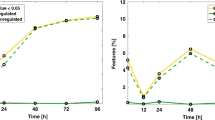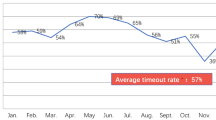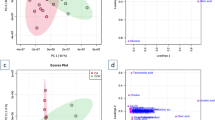Abstract
THE pattern of the metabolic response of man to injury (for example, fracture of a long bone), in particular its effect on protein catabolism, has been under investigation for some time by one of us1 as this phenomenon is of basic importance to our understanding of protein metabolism in general. The reaction is characterized in man by a marked increase in the urinary excretion of nitrogen and sulphur, which reaches a peak from the fourth to the eighth day after the injury and then slowly declines. There is also a loss of phosphorus and potassium. This phenomenon has been confirmed by many workers and in other forms of injury2. Cuthbertson, McGirr and Robertson3 have also found the same thing to occur in the rat, though rather earlier. The losses appear to be more general than local in origin.
This is a preview of subscription content, access via your institution
Access options
Subscribe to this journal
Receive 51 print issues and online access
$199.00 per year
only $3.90 per issue
Buy this article
- Purchase on SpringerLink
- Instant access to full article PDF
Prices may be subject to local taxes which are calculated during checkout
Similar content being viewed by others
References
Cuthbertson, D. P., Biochem. J., 24, 1244 (1930); Quart. J. Med., 1, 233 (1932); Brit. J. Surg., 23, 505 (1936); Lancet, (i), 433 (1942); Brit. Med. Bull., 3, 96 (1945); Brit. J. Nutrit., 4, 232 (1950).
Lucido, J., Ann. Surg., 3, 640 (1940). Browne, J. S. L., Josiah, Macy, Jr., Foundation Conference on Bone and Wound Healing. New York, 4th Meeting, June, 1943, p. 97. Cope, O., Nathanson, I. T., Rourke, G. M., and Wilson, H., Ann. Surg., 117, 937 (1943). Howard, J. E., Parson, W., Stein, K. E., Eisenberg, H., and Reidt, V., Johns Hopkins Hosp. Bull., 75, 156 (1944). Howard, J. E., Winternitz, J., Parson, W., Bigham, jun., R. S., and Eisenberg, H., Johns Hopkins Hosp. Bull., 75, 209 (1944). Wilkinson, A. W., Billing, B. H., Nagy, G., and Stewart, C. P., Lancet, (i), 640 (1949); (ii), 135 (1950). Moore, F. D., and Ball, M. R., “The Metabolic Response to Surgery” (C. C. Thomas. Springfield, Illinois, 1952).
Cuthbertson, D. P., McGirr, J. L., and Robertson, J. S. M., Quart. J. Exp. Physiol., 29, 13 (1939).
Albright, F., Josiah Macy, jun., Foundation Conference on Bone and Wound Healing, New York, 1st Meeting, 1942, p. 9.
Ingle, D. J., Ward, E. O., and Kuizenga, M. H., Amer. J. Physiol., 149, 510 (1947).
Selye, H., “Stress” (Acta (Inc.) Med. Pub., Montreal, 1950).
Kochakian, C. D., and Robertson, E., J. Biol. Chem., 190, 481 and 495 (1951).
Ingle, D. J., Ann. New York Acad. Sci., 50, 576 (1949).
Eliel, L. P., Pearson, O. H., and White, F. C., J. Clin. Invest., 31, 419 (1952).
Engel, F. L., Endocrinol., 50, 462 (1952).
Author information
Authors and Affiliations
Rights and permissions
About this article
Cite this article
CAMPBELL, R., SHARP, G., BOYNE, A. et al. Cortisone and the Metabolic Response to Injury. Nature 172, 158–160 (1953). https://doi.org/10.1038/172158b0
Issue date:
DOI: https://doi.org/10.1038/172158b0
This article is cited by
-
Vom Verständnis zur Therapie der perioperativen Inflammation
Der Anaesthesist (2019)



